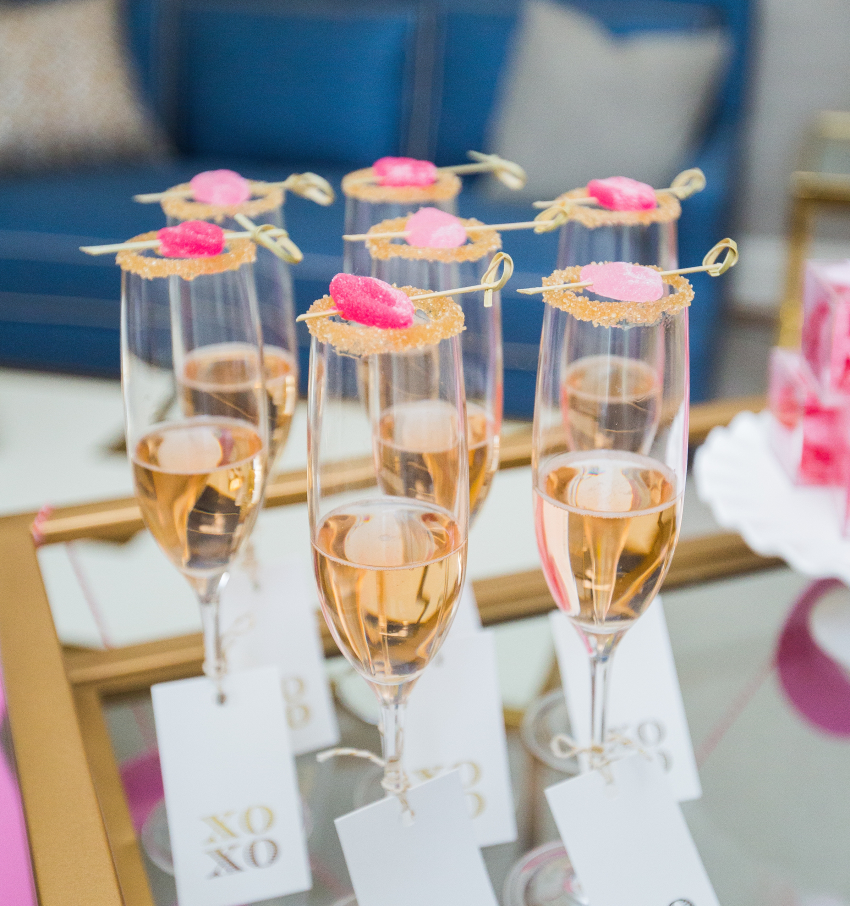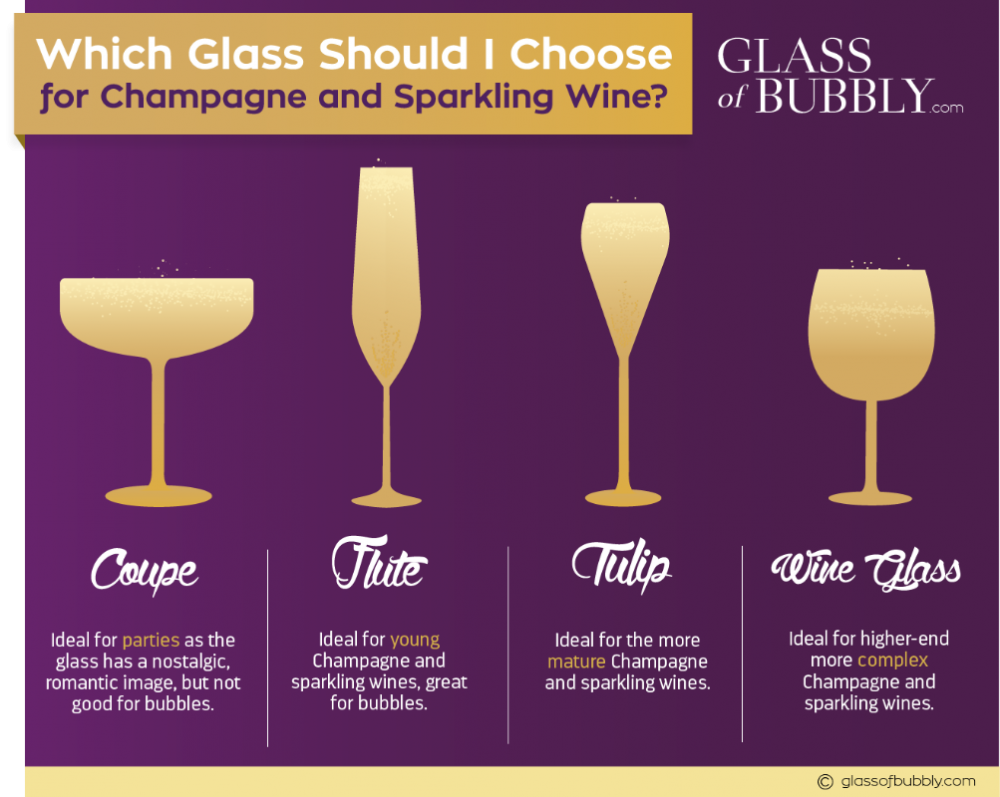It’s not Champagne unless it comes from Champagne, France. If it comes from anywhere else it’s referred to as Sparkling Wine.
Generally speaking sparkling wines DO NOT get better with age. If you are fortunate enough to have a properly stored vintage you may get lucky.
Proper Pronunciation:
•Dom Pérignon – Dom Peh-ree-nyon
•Veuve Clicquot – Verv Kli-koh
•Deutz – Dirts
•Ruinart – Rwee-nar
•Piper-Heidsieck – Pee-pay Ed-sick
•Mumm – Moom / Mewm
•Pol Roger – Pol Roh-jeh
•Louis Roederer – Loo-wee Row-ed-er-ey
•Bollinger – Bol-an-jey
•Moët et Chandon – Moh-et et Chan-dawn
The Process of Bubbles:
Step 1. Start with a slightly tart white wine
Step 2. Add yeast and sugar into a contained environment i.e. the bottle. As the yeast eats the sugar it releases carbon dioxide. Being as it is in a closed environment the carbon dioxide has nowhere to go thus carbonating the wine. This second fermentation is called Liqueur di Tirage.
Step 3. Lees and Riddlings. Lees are dead yeast cells that are left behind in the bottle. A wine that is sur lees (with lees) will taste richer. Riddling is the act of rotating the bottles around while they are upside down over a period of time. This motion slowly collects the lees into the neck of the wine bottle. Careful, these bottles are highly pressurized.
Step 4. Disgorge and Dosage. This is the fun part. Once all of the junk has settled into the neck of the bottle, the neck is put headfirst into a liquid nitrogen bath. This freezes all of the lees. Once frozen, the cap it taken off and the ice cube of lees comes flying out. You now have a clear bottle of sparkling wine. After disgorgement, a combination of wine and sugar is added for flavor. Of course depending on the type of sparkling wine or champagne you are working with will depend on how much sugar is added back in.
How Sweet it is:
- Brut Nature – No Sugar Added
- Extra Brut
- Brut- This is the most popular option as it has a slight sweetness and pairs well with food
- Extra Dry- A little bit sweeter and is often used as an aperitif (an alcoholic beverage before a meal)
- Dry
- Demi-Sec- Used as a Dessert Wine
- Doux- The Sweetest
What Type of Glass to Use:
The taller and more narrow the flute, the further the bubbles have to go. This not only looks pretty, but it keeps the bubbles popping longer. If you prefer a more flat champagne go with the classic and sexy coupe.

